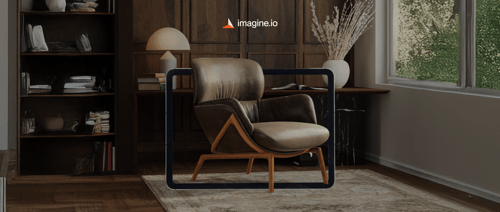If you’ve ever tried buying a modular couch online—switching fabrics, adding a chaise, changing colors—you’ve probably enjoyed the power of customization at your fingertips. But here’s the part most customers don’t think about: behind that sleek interface is a complex engine deciding which combinations work, how much they cost, and what the product should look like. That engine is called a product configurator tool.
Now flip to the business side. If you’re a brand that offers configurable or made-to-order products—be it furniture, packaging, electronics, or industrial components—you know how challenging it is to manage endless combinations, enforce product rules, and calculate pricing accurately.
One misstep, and you're left with frustrated customers, incorrect orders, or inconsistent quotes. That’s exactly where a product configurator with dynamic pricing capabilities becomes mission-critical.
Let’s break it down into what it is, the types available, and how leading businesses are using platforms like imagine.io to streamline operations, elevate customer experience, and close sales faster.
Get the latest updates straight to your inbox.
By clicking sign up you'll receive occasional emails from imagine.io. You always have the choice to unsubscribe within every email you receive.
So, What is a 3D Product Configurator?

A 3D product configurator is a cloud-enabled software solution that empowers customers and sales teams to personalize products in real time. By choosing from options such as colors, finishes, materials, features, and add-ons, users can design items that match their exact preferences.
The system relies on built-in rules to prevent invalid combinations and automatically converts each selection into essential production data—like bills of materials (BOMs), pricing details, and quotes.
This not only speeds up the sales cycle but also streamlines manufacturing workflows while minimizing costly mistakes. In simple terms, a 3D product configurator tool makes customization seamless, interactive, and highly efficient for both businesses and buyers.
Types of Product Configurations: From Simple Picks to Custom Engineering
Interactive product configurators aren’t one-size-fits-all. Depending on your business model and how complex your products are, the type of configuration you offer can vary widely. Let’s explore the major types of product configurations—from simple selections to advanced engineering.
-
STO – Select-to-Order
Think of this as a “build-your-own” approach with total independence. Customers can configure products from a menu of options, and each selection is independent of the others. No rules, no dependencies—just pure customization.
Use Case: Great for products with modular parts where every component is compatible with the rest.
-
PTO – Pick-to-Order
This is one of the most straightforward forms of online product configurators. Customers pick components on their own—without guidance from a configurator. There’s no logic engine checking for compatibility.
Use Case: Common in eCommerce, especially for simple bundles or kits where the buyer understands the product well.
-
CTO – Configure-to-Order
CTO offers a guided experience where customers configure a product based on a set of predefined, interrelated components. The configurator ensures compatibility across all selections.
Example: Building a custom laptop where customers choose the processor, RAM, graphics card, and software—all within a rule-based product configurator.
Use Case: Ideal for businesses with modular product lines that need to ensure logical component combinations.
-
ATO – Assemble-to-Order
ATO blends the efficiency of pre-manufactured parts with the flexibility of customization. Components are produced in advance based on forecasted demand, and final assembly happens once the customer places an order.
Use Case: Perfect for mid-level customization where speed is important but personalization still matters—like furniture or bicycles.
-
MTO – Make-to-Order
With MTO, production starts only after the customer places an order. While some components may be stocked in advance, final assembly and customization happen post-purchase.
Use Case: Common in industries adopting Industry 4.0 strategies—ideal when automation meets individualized manufacturing needs.
-
ETO – Engineer-to-Order
The most complex (and often most powerful) configuration type. ETO goes beyond choosing from pre-set components. It allows for entirely new parts and logic rules to be created during the configuration process—essentially co-engineering the product with the customer.
Use Case: Engineering product configurators in aerospace, industrial machinery, or construction.
How Does a Product Configurator Work?

Here is how an interactive configurator tool streamlines the customization process and connects the dots between customer choice and production readiness:
-
User Interaction
The process starts when a customer, sales rep, or design team member engages with the configurator. Through an intuitive interface, they can explore available product options—such as size, color, material, or functional add-ons—without needing deep technical knowledge. This step makes customization easy and accessible, even for non-technical users.
-
Rule-Based Logic
Behind the scenes, the configurator uses pre-defined rules to ensure every choice is valid. For example, it prevents incompatible selections (like choosing a fabric not suited for a certain frame) and highlights recommended combinations. This reduces the risk of costly errors and ensures the configured product is always feasible for production.
-
Real-Time Visualization
As options are selected, the configurator instantly updates the product’s appearance—often as a 3D model or interactive render. This gives users a clear picture of how their custom product will look in real life, helping them make confident decisions while reducing back-and-forth communication.
-
Automatic Outputs
Once the configuration is finalized, the system automatically generates all the essential outputs: accurate pricing, quotes, technical drawings, and a detailed bill of materials (BOM). In some cases, it can even connect directly to manufacturing systems, streamlining the process from design to production.
Key Benefits of Using a Product Configurator
Now, after knowing the types of rule-based product configurators available, it’s important to understand the real value they bring to businesses.
-
Enhanced Customer Experience
By allowing buyers to personalize products with colors, sizes, and features, configurators create an engaging shopping journey. Real-time visualization builds confidence, reduces hesitation, and drives higher satisfaction and conversions.
-
Reduced Errors
Every choice runs through built-in product rules, ensuring only valid combinations are possible. This minimizes miscommunications, prevents incompatible selections, and reduces costly mistakes during production.
-
Faster Sales Cycle
Instead of manual pricing and proposal creation, configurators instantly generate quotes and technical details. This speeds up approvals, shortens sales cycles, and frees sales teams to focus on closing deals.
-
Streamlined Manufacturing
Once configurations are finalized, the tool produces accurate BOMs, pricing, and production-ready data. Manufacturers can move directly into production without delays or manual data entry, improving efficiency and accuracy.
-
Valuable Market Insights
Every interaction within the configurator provides data on customer behavior, preferences, and popular product variations. These insights help businesses refine product lines, optimize marketing campaigns, and stay ahead of market trends.
Why Dynamic Pricing Matters in a Configurator
One of the biggest challenges with customizable products isn’t just configuration—it’s pricing. When product combinations multiply, so do pricing variations. Without a dynamic pricing system, teams often resort to spreadsheets, manual quote generation, or worse—estimates that lead to costly mistakes.
A product pricing configurator solves this by automatically calculating costs as users make selections. It factors in material choices, production costs, regional pricing, shipping, and more—all in real time. This creates clarity for the buyer and control for the seller.
In enterprise environments, this isn’t just a UX upgrade—it’s a sales acceleration tool. It shortens quote times, increases order accuracy, and builds trust across teams.
How Platforms Like imagine.io Make it All Possible
Leading custom product configurators like imagine.io are helping businesses bring these capabilities to life—without the complexity traditionally associated with 3D and configuration tools.
With 3D-first product configurators powered by real-time visualization, dynamic pricing logic, and compatibility rules, imagine.io enables brands to build interactive, scalable experiences for both their internal teams and end buyers.
From modular furniture to custom industrial equipment, companies can digitize their entire product line, define rule-based logic, connect it with pricing structures, and deliver it all through an intuitive, web-based configurator. All without writing a single line of code.
The result?
- Fewer errors
- Faster approvals
- Stronger sales pipelines
- And a consistent brand experience across every channel
Final Thoughts
In a world where buyers demand speed, personalization, and clarity—product pricing configurators aren’t just a “nice-to-have.” They’re a strategic advantage.
For businesses that deal with complex product lines, multiple configurations, or custom manufacturing, investing in the right configuration tool is a move toward operational efficiency and future-ready commerce.
Want to see how a 3D-powered pricing configurator could work for your business? Book a demo with imagine.io and explore how top brands are transforming the way they sell, quote, and build.


.gif?width=1296&height=1296&name=Untitled%20design%20(8).gif)



.png?width=500&name=How%20to%20Add%20a%203D%20Product%20Configurator%20to%20Your%20WordPress%20Website%20(Complete%20B2B%20Guide).png)
















%20(1).png?width=500&name=Why%20Exploded%20Mattress%20Views%20Matter%20(And%20How%20to%20Generate%20Them)%20(1).png)
.png?width=500&name=Best%20Shopify%20Product%20Configurator_%20How%20to%20Choose%20the%20Right%20One%20(2).png)
.png?width=500&name=Why%20Exploded%20Mattress%20Views%20Matter%20(And%20How%20to%20Generate%20Them).png)



.png?width=500&name=Best%20Shopify%20Product%20Configurator_%20How%20to%20Choose%20the%20Right%20One%20(1).png)







.png?width=500&name=How%203D%20Rendering%20Can%20Make%20or%20Break%20Your%20Industrial%20Design%20Pitch%20(1).png)








%20with%20Digital%20Twins%20and%203D%20Visualization.png?width=500&name=Optimizing%20Your%20Digital%20Asset%20Management%20(DAM)%20with%20Digital%20Twins%20and%203D%20Visualization.png)




.png?width=500&name=Styling%20Home%20Decor%20for%202025_%20From%20Global%20Influences%20to%20Playful%20Personalization%20(1).png)

